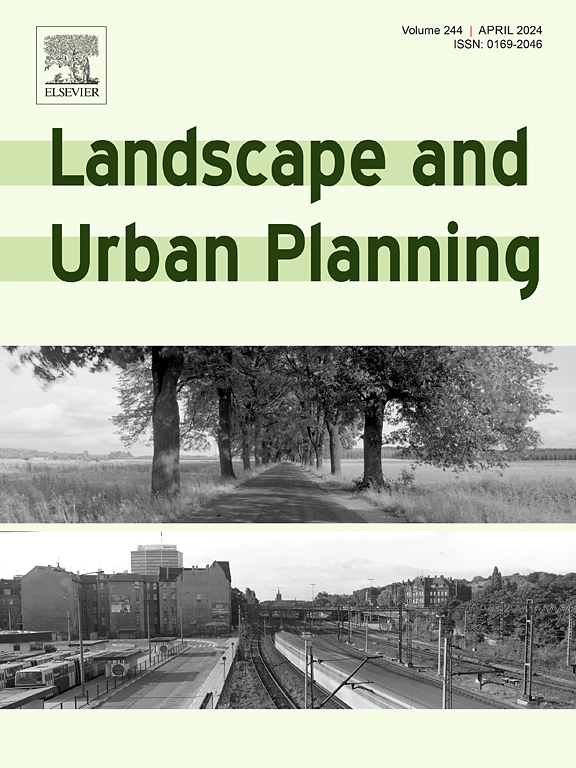Land-use legacy drives post-abandonment forest structure and understory in the western Alps
IF 7.9
1区 环境科学与生态学
Q1 ECOLOGY
引用次数: 0
Abstract
Rural exodus from European mountain regions to lowlands has triggered natural reforestation of abandoned lands in the 19th and 20th centuries, altering the provision of ecosystem services and creating management challenges. Post-abandonment forests are complex ecosystems that respond over time and space to several drivers. Their management requires integrated approaches that involve insights from historical ecology. Our study aimed to assess the influences of the land-use legacies on post-abandonment forest overstory and understory and provide insights on suitable management strategies. We assessed these influences using multiple scales (from landscape to field scale) and ecological approaches (vegetation, forest, and landscape ecology).
We identified post-abandonment forests within a western Alps watershed through a land-use/land-cover change detection from 1954 to 2017. Field surveys were conducted in three different land-use legacy types (i.e., transitions from former grasslands, wood-pastures, and sparse forests to dense forests) to analyse forest overstory and understory. We explored the influences of land-use legacy on post-abandonment forests through redundancy analysis, using forest overstory and understory variables as response variables and environmental factors as predictors. Our study revealed successional and environmental differences among post-abandonment forests, notably depending on the historical presence of biological legacies: forests originating from former wooded areas exhibited ecological conditions closer to natural trajectories, while those resulting from abandoned grasslands still express conditions similar to the pre-abandonment ones. Based on our findings, we discuss how the direct implications of land-use legacies on post-abandonment forests can provide insights into their management.
西阿尔卑斯地区土地利用遗产驱动撂荒后森林结构和林下植被
19世纪和20世纪,农村人口从欧洲山区向低地迁移,引发了废弃土地的自然再造林,改变了生态系统服务的提供,并带来了管理方面的挑战。废弃后的森林是复杂的生态系统,随着时间和空间的推移,它对几个驱动因素作出反应。它们的管理需要综合的方法,包括历史生态学的见解。本研究旨在评估土地利用遗产对撂荒后林下植被的影响,并提供适宜的管理策略。我们使用多个尺度(从景观到野外尺度)和生态学方法(植被、森林和景观生态学)评估了这些影响。通过对1954年至2017年西阿尔卑斯山流域土地利用/土地覆盖变化的检测,我们确定了撂荒后的森林。在三种不同的土地利用遗产类型(即从原草原、木牧场和疏林向茂密林的过渡)中进行了实地调查,分析了森林的上下层植被。通过冗余分析,以林下和林下变量为响应变量,以环境因子为预测因子,探讨了土地利用遗产对撂荒后森林的影响。我们的研究揭示了撂荒后森林的演替和环境差异,主要取决于生物遗产的历史存在:原始林地的森林表现出更接近自然轨迹的生态条件,而撂荒草原的森林表现出与撂荒前相似的生态条件。基于我们的研究结果,我们讨论了土地利用遗产对废弃后森林的直接影响如何为其管理提供见解。
本文章由计算机程序翻译,如有差异,请以英文原文为准。
求助全文
约1分钟内获得全文
求助全文
来源期刊

Landscape and Urban Planning
环境科学-生态学
CiteScore
15.20
自引率
6.60%
发文量
232
审稿时长
6 months
期刊介绍:
Landscape and Urban Planning is an international journal that aims to enhance our understanding of landscapes and promote sustainable solutions for landscape change. The journal focuses on landscapes as complex social-ecological systems that encompass various spatial and temporal dimensions. These landscapes possess aesthetic, natural, and cultural qualities that are valued by individuals in different ways, leading to actions that alter the landscape. With increasing urbanization and the need for ecological and cultural sensitivity at various scales, a multidisciplinary approach is necessary to comprehend and align social and ecological values for landscape sustainability. The journal believes that combining landscape science with planning and design can yield positive outcomes for both people and nature.
 求助内容:
求助内容: 应助结果提醒方式:
应助结果提醒方式:


